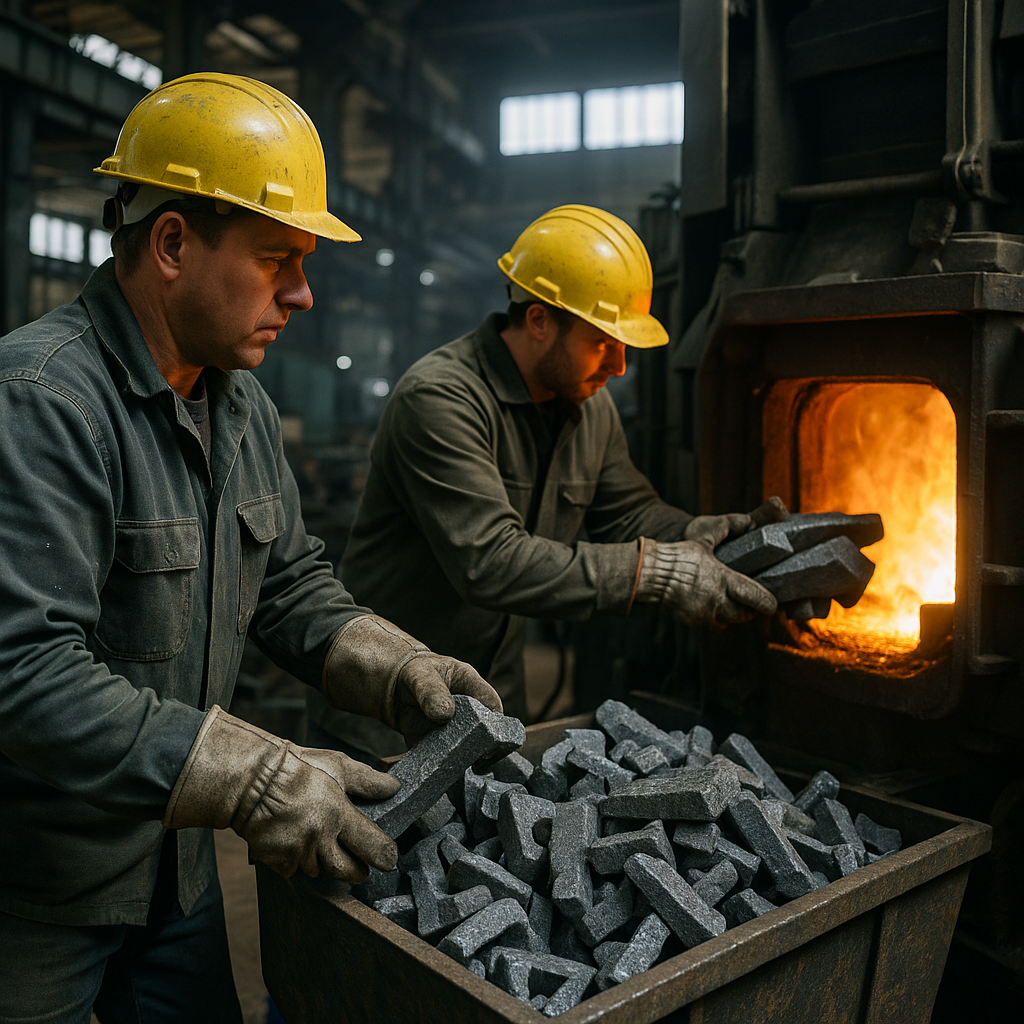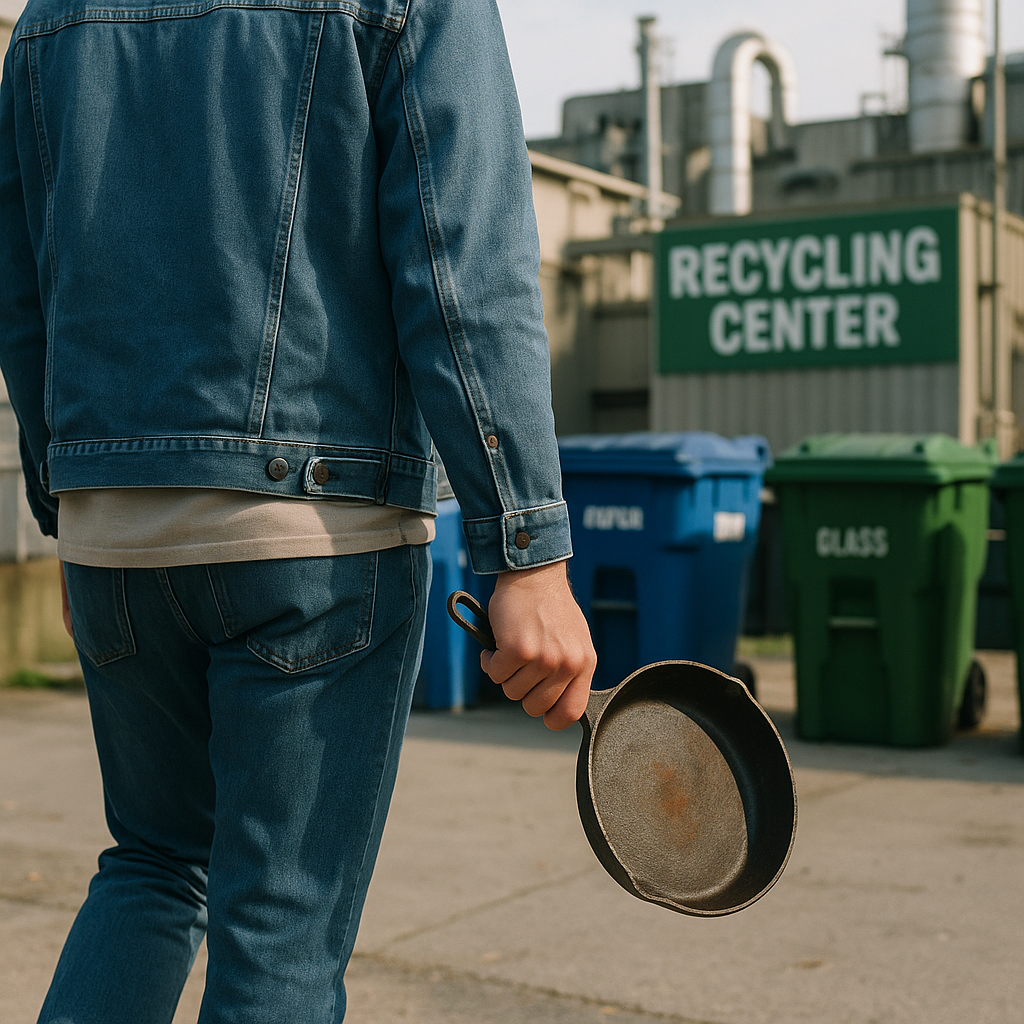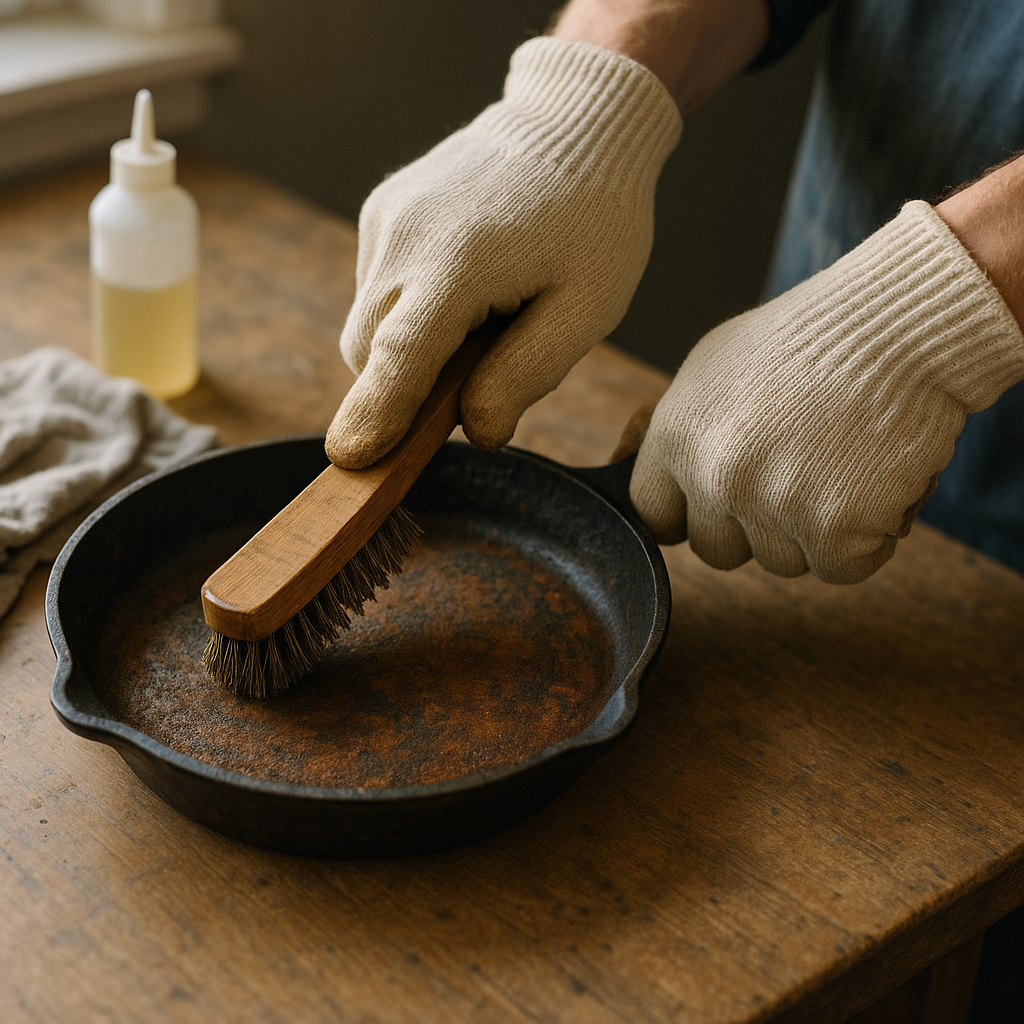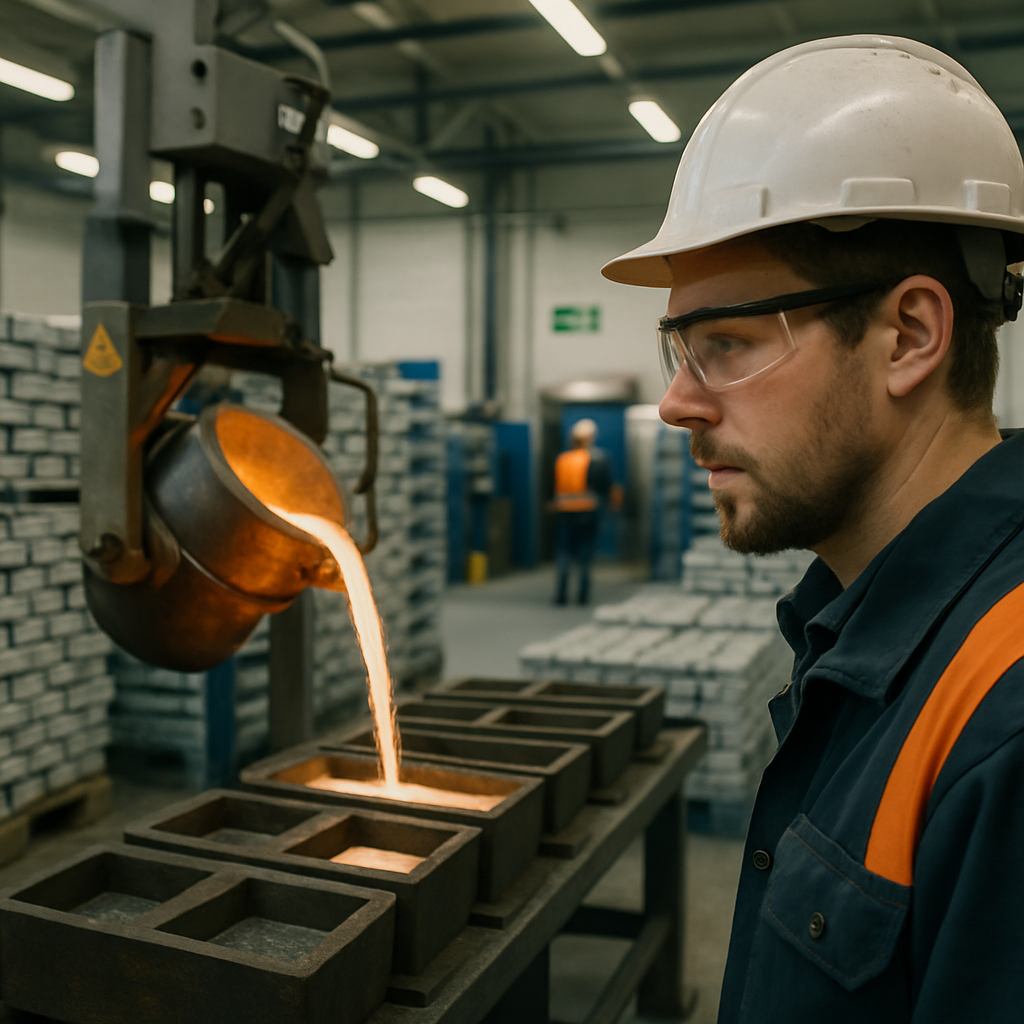5901 Botham Jean Blvd, Dallas, TX 75215
Cast Iron Recycle Guide: How to Reuse, Process, and Benefit from Recycling Cast Iron
October 10, 2025Cast iron, one of the oldest and most versatile iron alloys, dates back to the 5th century B.C. This ferrous metal contains between 2-5% carbon and 1-3% silicon, granting it unique properties valuable for various applications. You’ll find cast iron in everyday items like cookware, pipes, radiators, machine parts, and decorative architectural elements.
Recycling cast iron provides significant environmental benefits. When one ton of cast iron is recycled, approximately 2,500 pounds of iron ore, 1,400 pounds of coal, and 120 pounds of limestone are saved. This process uses up to 75% less energy than producing new cast iron from raw materials, leading to fewer greenhouse gas emissions. Metal recycling thus prevents millions of tons of carbon dioxide from entering our atmosphere annually.
Besides environmental advantages, cast iron recycling bolsters the economy. The recycling industry creates jobs—studies show that recycling 10,000 tons of waste creates 36 jobs compared to just 6 when the same waste is sent to landfills. Additionally, recycling helps stabilize metal prices by providing a steady supply of raw materials, independent of mining market fluctuations. These combined benefits make cast iron recycling a practical approach to resource management that supports both our planet and communities.
What Cast Iron Items Can Be Recycled?
Cast iron is highly recyclable and can be transformed into new products without losing quality. Both household and industrial cast iron items hold significant value in the recycling stream. Identifying these items in your home or workplace is the first step toward responsible disposal.
Household Cast Iron Items
Many common household items made of cast iron can be recycled rather than sent to landfills. Kitchen items are perhaps the most recognizable cast iron products in homes. These include skillets, pots, and pans that may have become worn or damaged over time.
Cast iron cookware is particularly valuable in the recycling process due to its durability and high metal content. Even if your cast iron skillet is rusty or damaged, recycling centers will accept it. The magnetic properties of cast iron make these items easy to identify—simply use a magnet to check if it sticks to the surface.
Beyond the kitchen, other recyclable household cast iron items include:
- Decorative door knobs and hinges
- Drawer pulls and handles
- Ornamental railings
- Fireplace grates and tools
- Outdoor furniture components
- Garden ornaments and statues
Industrial and Construction Cast Iron
Industrial and construction settings yield some of the largest and most valuable cast iron items for recycling. These materials are particularly common in older buildings constructed before the 1970s, when cast iron was frequently used for its strength and durability.
Radiators are among the most substantial cast iron items found in older homes and buildings. They require professional removal due to their weight and connection to plumbing systems, but cast iron radiators hold significant recycling value. They retain thermal energy longer than modern alternatives, making them recognizable in older heating systems.
Other major recyclable cast iron items from construction include:
- Plumbing pipes and fittings
- Bathtubs (often covered with enamel but containing cast iron underneath)
- Sinks and basins
- Manhole covers
- Decorative grates for air vents
- Heavy machinery parts
When renovating older bathrooms, it’s worth checking if bathtubs and sinks are made of cast iron. Often, items thought to be porcelain are actually cast iron covered with enamel. A simple test with a magnet can confirm—if the magnet sticks, the item contains cast iron and can be recycled.
Even large and heavy cast iron items have recycling value. During demolition projects, salvaging cast iron components can offset disposal costs while keeping valuable materials in the recycling stream.
In industrial settings, cast iron components from obsolete machinery, equipment frames, and manufacturing tools can all be recycled. The durability of cast iron means that even rusted or damaged items retain their recycling value.
| Household Items | Skillets, Pots, Pans, Decorative Door Knobs, Drawer Pulls, Ornamental Railings, Fireplace Grates, Outdoor Furniture Components, Garden Ornaments |
| Industrial Items | Radiators, Plumbing Pipes, Bathtubs, Sinks, Manhole Covers, Decorative Grates, Heavy Machinery Parts |
When separating materials for recycling, remember that pure cast iron items are preferred. Items with multiple materials may require additional processing, but most recycling facilities have methods to handle mixed material items.
Whether from household or industrial sources, recycling cast iron reduces the need for raw material mining, conserves energy, and keeps valuable materials in circulation instead of in landfills. Even small cast iron items contribute to this important environmental process.
How is Cast Iron Recycled?

The cast iron recycling process transforms discarded materials into valuable resources. Cast iron’s recyclability stems from its durable nature and composition. The process begins with collection and ends with new products ready for use.
Collection
Recycling facilities gather cast iron from various sources such as old bathtubs, radiators, pipes, and worn-out cookware. Construction sites, demolition projects, and household waste contribute significantly to collection efforts.
When individuals bring cast iron items to recycling centers, the materials are weighed to determine their value and inform sorting requirements. Commercial collection trucks deliver larger quantities from residential areas.
Sorting
After collection, workers separate cast iron from other materials, ensuring high-quality recycled metal without contamination. Magnetic separation is crucial in this stage because cast iron is naturally magnetic.
Specialized equipment like crossbelt magnetic separators efficiently divide ferrous metals like cast iron from non-ferrous materials. Workers further sort metals by type on conveyors, maintaining the purity of the recycled materials.
Processing and Shredding
Before melting, cast iron must be broken down into smaller, manageable pieces. Recycling facilities use hydraulic equipment to crush larger items, and industrial shredders reduce the material to uniform sizes.
This size reduction increases surface area for more efficient melting and allows for easier transportation to foundries. The smaller pieces require less energy to process in subsequent stages.
Melting
The processed cast iron enters large furnaces where temperatures exceed 3,000 degrees Fahrenheit. Electric arc furnaces are commonly used for this purpose, transforming solid cast iron into its liquid state.
This melting process uses significantly less energy than producing new cast iron from raw ore. One ton of recycled cast iron saves approximately 1,400 pounds of coal and 120 pounds of limestone, offering substantial environmental benefits.
Purification
During melting, impurities rise to the surface of the molten metal. Workers remove these impurities to ensure quality. The purification process may involve adding limestone, which helps separate unwanted materials.
Some facilities use advanced methods like electrolysis, employing electric currents to dissolve impurities from the melted cast iron. The goal is to create a pure material for new products.
Solidification
After purification, the molten cast iron moves to cooling chambers where it solidifies into various forms depending on its intended use, such as blocks, sheets, rods, or specific molds.
The solidified cast iron maintains the same quality and properties as virgin material. This key advantage of cast iron recycling allows it to be recycled repeatedly without degradation.
Once cooled and formed, the recycled cast iron is ready for manufacturing new products, including cookware, pipes, automotive parts, or construction materials. This cycle continues as these items eventually reach the end of their useful life.
| Aspect | Benefit |
| Energy Savings | 75% less energy used compared to production from virgin materials |
| Resource Conservation | Saves approximately 2,500 pounds of iron ore, 1,400 pounds of coal, and 120 pounds of limestone per ton |
| Greenhouse Gas Emissions | Reduction in millions of tons of CO2 emissions annually |
| Job Creation | 36 jobs per 10,000 tons of waste recycled (compared to 6 jobs if landfilled) |
Where Can I Recycle Cast Iron?

Cast iron can be recycled at local scrap yards throughout the United States. These facilities specialize in processing ferrous metals like cast iron and often pay competitive rates based on weight and current market values. Many scrap yards have industrial scales to weigh your materials accurately, offering immediate cash payments.
Local recycling centers also accept cast iron items for recycling. Unlike scrap yards that focus primarily on metals, recycling centers handle various recyclable materials but still process cast iron effectively. Check with your municipal recycling program to confirm whether they accept cast iron items directly.
Waste management facilities in many regions now include metal recycling operations. These locations may be convenient if you’re already planning to dispose of other household materials. Call ahead to verify they accept cast iron, and inquire about their payment policies.
Many private metal recycling companies actively purchase cast iron. Companies like Trademark Metals Recycling and similar regional businesses offer specialized services for metal recycling. These businesses often provide better rates than general recycling centers since they focus specifically on metal processing.
When searching for places to recycle cast iron near you, look for facilities that advertise scrap metal recycling services. Many of these locations post their current buying rates online or provide quotes over the phone. Prices typically vary based on the quality and quantity of your cast iron items.
Some recycling businesses offer pickup services for larger quantities of cast iron. This option is particularly valuable if you’re disposing of heavy items like bathtubs, radiators, or multiple pieces of cast iron cookware. Contact local scrap yards to inquire about their minimum weight requirements for pickup services.
The financial incentive for recycling cast iron can be significant. Current market rates fluctuate, but cast iron typically falls under the “heavy ferrous metal” category, with consistent demand in recycling markets. You can expect to receive payment based on the current per-pound rate for ferrous metals in your area.
| TM Scrap Metals | Competitive pricing and picks up from site |
| Atlas Iron & Metal | Offers good prices and prompt payment |
| Reliable Recycling Center | Open six days a week and provides cash payments |
Before transporting your cast iron to a recycling facility, clean it thoroughly. Remove any non-metal parts, like wooden handles or rubber gaskets. This preparation ensures you’ll receive the maximum value for your materials and simplifies the recycling process for the facility.
Tips for Recycling Cast Iron

Cast iron is highly recyclable due to its ferrous metal content. Proper preparation of cast iron items before recycling ensures efficient processing and maximizes their value in the recycling stream. Follow these practical guidelines to make the recycling process smoother.
Thoroughly cleaning cast iron before recycling is essential. Remove all dirt, grease, and debris using a stiff brush or cloth. For items with stubborn residue, you might need a degreaser or cleaning solution. This cleaning step improves the quality of the recycled material and prevents contamination.
Another critical step is removing non-metal components. Many cast iron items contain plastic, rubber, or other materials that must be separated before recycling. For example, remove plastic handles from cast iron cookware or rubber gaskets from pipes. The cleaner the metal, the higher its value in the recycling stream.
Preparing Different Types of Cast Iron Items
Cast iron cookware like skillets and pots are among the most common household items brought to recycling centers. Remove any wooden handles or non-metal attachments before recycling. If your cookware has an enamel coating, know that this doesn’t prevent recycling, although it might slightly reduce its scrap value.
For larger items like radiators, bathtubs, or sinks, professional removal is often the best approach due to their heavy weight. Most recycling centers appreciate when these bulky items are broken down into smaller, manageable pieces. However, always check with your recycler first before dismantling large pieces.
Cast iron pipes from plumbing renovations require special attention. Clean off any remaining sewage or debris and remove any non-metal fittings or connectors. Many recycling centers accept these pipes whole, but some may require them to be cut into specific lengths.
Recycling Center Requirements
Contact your local recycling facility before transporting your cast iron items. Each center has specific guidelines about preparation and acceptable materials. Some may require an appointment for large deliveries or have restrictions on certain types of cast iron products.
When transporting cast iron to recycling facilities, secure items properly due to their weight. Use a vehicle appropriate for heavy loads and follow all safety protocols. For extremely large items like bathtubs, many recycling centers offer pickup services or can recommend specialist removal companies.
Recycling cast iron provides significant environmental benefits by reducing landfill waste and conserving energy and natural resources. Cast iron can be recycled repeatedly without losing quality, making it an excellent material for the circular economy.
| Item Type | Preparation Requirements |
|---|---|
| Cookware | Remove wooden handles or non-metal attachments; enamel coating is acceptable but may reduce scrap value. |
| Radiators | Consider professional removal due to weight; can be broken into smaller pieces for easier handling, but check with recycler. |
| Pipes | Clean off remaining sewage or debris; remove non-metal fittings or connectors; may need to be cut into specific lengths. |
Separating cast iron from other metals before recycling is helpful. A simple magnet test can identify cast iron, as it’s magnetic due to its high iron content. This pre-sorting step makes the recycling process more efficient and may even result in better compensation at facilities that pay for scrap metal.
By following these guidelines, you’ll contribute to more effective recycling of cast iron products and help sustain the valuable resources these items contain. Proper preparation ensures your cast iron items are processed efficiently and returned to the manufacturing stream as quickly as possible.
Conclusion: The Impact of Recycling Cast Iron

Recycling cast iron has a significant environmental impact. By diverting this durable material from landfills, we reduce waste volume and conserve valuable natural resources. The benefits are clear: recycling cast iron saves up to 95% of the energy required for primary production and significantly cuts CO2 emissions by eliminating the need for new mining operations.
The circular economy thrives when materials like cast iron complete their lifecycle journey and become new products. This metal’s unique properties allow it to be recycled indefinitely without degrading in quality. By recycling old cast iron items, you support sustainable practices that benefit both present and future generations. For your recycling needs, contact Okon Recycling at 214-717-4083.
